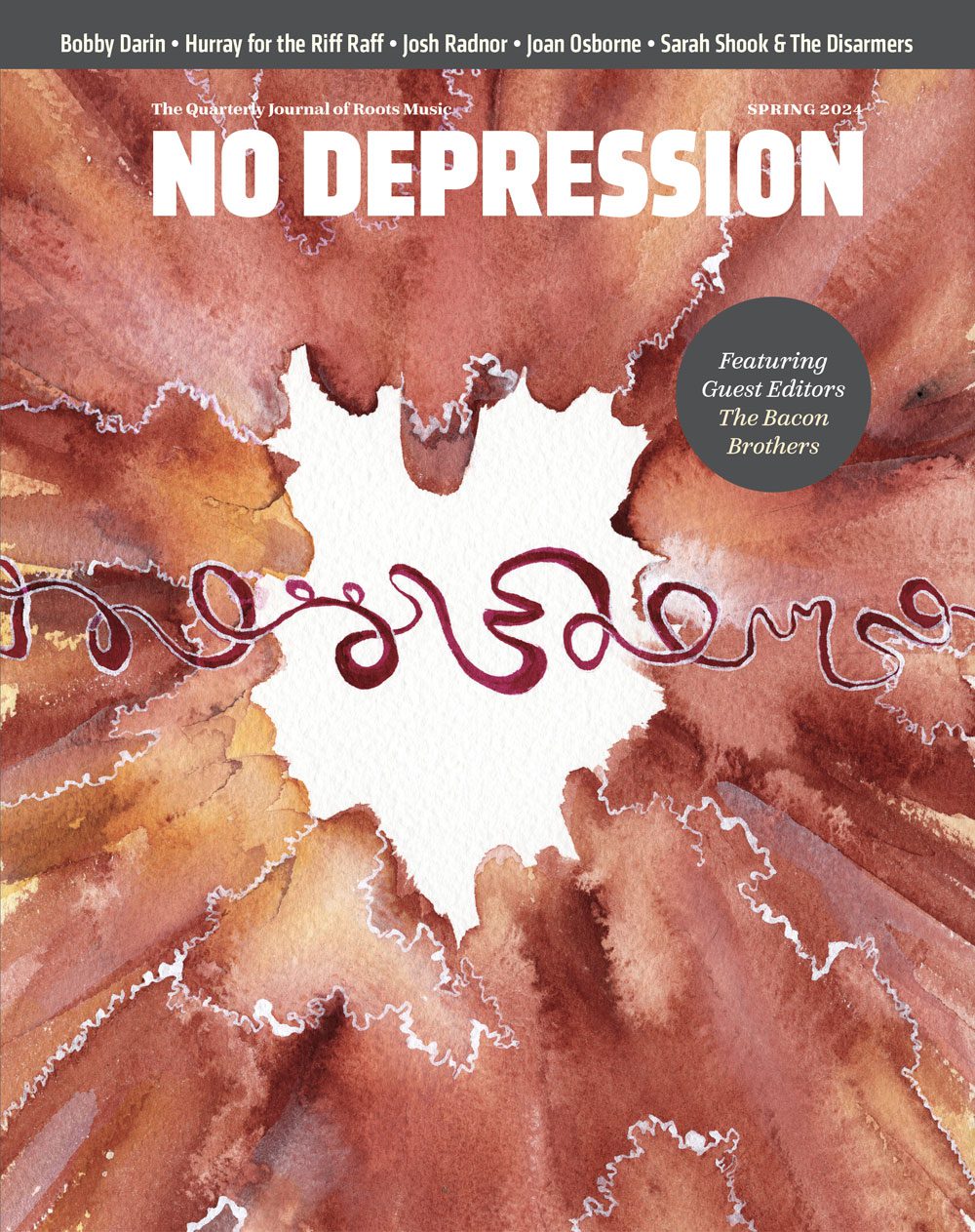Son Volt – Blue Note (Columbia, MO)
The first night of Son Volt’s 16-date “acoustic tour” was at this 500-capacity club on a college town’s bohemian strip. The Blue Note is home turf to Jay Farrar, the single most important venue in his early career, the right spot for Son Volt’s first outing before their most daring record to date found its audience.
Late summer Thursday night, the stage set with chairs, a few amps, drum kit, and the lights down but for two flea market lamps, one hanging from the ceiling, glowing rose and orange, a candle or two. The four walked across the platform, heads down, sat, began a new song. “There will be droughts and days inundated…There will be machinations unforeseen,” Farrar demanded. The opener pointed towards a mystifying and ungraspable future. The strolling, populist rhythms, the earthy tones were familiar, though the song was shocking and unknown. Dave Boquist’s ending telecaster riff revealed only simple-noted economy.
If Farrar’s songs have often been elegiac commemorations of deep memories, Son Volt’s performances never have been. This first date was no exception. New material dominated the set, the songs envisioning time driving forward through tangles of machines and speculations. Embracing his D-28, hair cut fresh from his brow, Farrar’s gaze fixed straight into faces that looked straight back. He might have been staring us down or looking through us, a look of some inarticulate trust — this is Columbia after all — neither severe nor withdrawn, just quiet, unblinking recognition. A look that said something like, “I’m showing a mystery here inside and there outside. Listen close. Here’s how it goes.” With the first harmonica breaths on “Tear Stained Eye”, the room surged with applause. And the room sang and savored every word.
Just shy of a quarter-century ago, Bob Dylan and The Band set out on their first extended tour in eight years, decking stages with lamps, couches and ashtrays, an indication of gatherings as homey and intimate as a Saugerties, N.Y., basement. The spontaneity couldn’t last. I don’t believe it’s overstatement to say that for a Columbia, Missouri, audience — half collegiate, half post-collegiate — Jay Farrar is Dylan. Which isn’t to say he sounds like that icon — though Farrar reinvents his material, freights his voice with compelling strangeness — but similar stakes ride on his performance. Like it or not, his songs hold a force that assemble something in his listeners’ souls. “Lend an ear before you go,” Farrar sang on “Strands”, phrasing with clear purpose, with more bending quavers than he does in the studio. In a line, he returned his audience’s recognition. There would be no dialogue but “thanks,” save when Farrar looked down and said, “It’s good to be back here. It really is,” his voice deadpan as a notary reviewing a will.
Jim Boquist smoked over his bass, his harmonies loose and lonely; Dave Boquist faced away from the band, solitary on the side, listening, his guitar too low in a distant, scrimmed mix, but breaking through during the acoustic set’s “Second Hand News”. His damning slide cut down across the lumbering melody like a broken blade. The band was absorbed in music and in something else harder to pinpoint. (The following night, the Bottle Rockets played their own acoustic show in St. Louis. Brian Henneman joked: “Jay looked high and low for two guys who could go 90 minutes and not crack a smile.”) The four played each song as if no one was there to hear, their concentration disarmed. So it should be for songs demanding reckoning with isolation, clocks and cycles stopping, endings of all kinds.
Nothing happened onstage, but everything might have happened. Though nominally an “acoustic” show, the arrangements married steam drill rock and the de-electrified sound of their Switchback EP (a promo-only 1997 release). The new tune “Strands” unwound with the Boquists ringing and cracking their electric notes past the formal end. (The tour was indeed designed to be acoustic; the band finally altered the plan.) Sounds came across a psychic divide, pushed from a place removed and imposing and hard to reach at the core. It would have been easy to mistake the delivery for something sodden and emotionless, for flatness even. We simply don’t associate such gravity and intensity with a strong live performance.
But emotions gathered from a deep, gripping place. Grown lower in register, Farrar’s voice and Heidorn’s riveting pace conveyed a kind of blue weight, a compressed heaviness that leaned out from the stage. (Heidorn’s drumming has become almost mathematical, wildness replaced with finely nuanced colors; he was the soul of acoustic revisions such as “Drown”.) A basic expectation of rock ‘n’ roll was overthrown: There was little ecstasy or exhilaration.
When release came, it came as paradox — as on “Windfall”, when, with the crowd bellowing the chorus, Farrar paused a beat and stretched out a line past every singing voice. Or the way on “Route” — a vision in which living is the same as nothing and is sucked like a hurricane through a straw — the guitar-blasted melody rose to cathedral high ceilings like flaming paper.
Then, in the second encore — as the first, played standing, fully electric — the band one-upped the ecstatic applause with a song no one knew: “The Last Time Around” (a minor hit for ’60s Chicago garage band the Del-Vetts). The Blue Note crackled with shock from the sudden fury; a tentative triumph was over.


